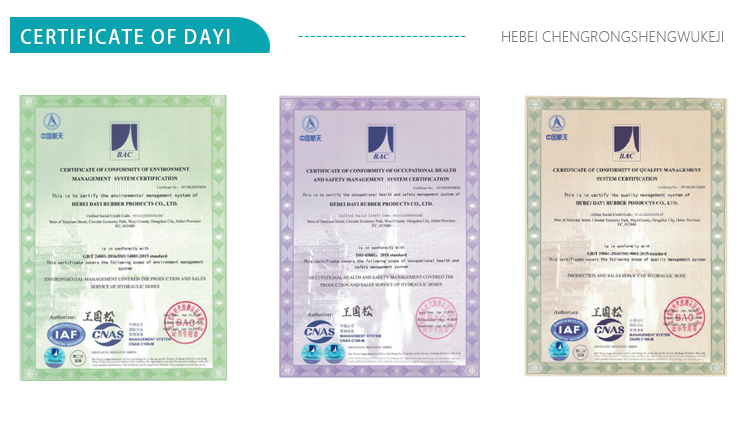335345435
Oct . 21, 2024 11:50 Back to list
hydraulic hose fittings types supplier
Understanding Hydraulic Hose Fittings Types and Their Suppliers
Hydraulic hose fittings are critical components in fluid power systems, playing a pivotal role in the functioning of hydraulic machines and equipment. They serve as connectors that join hoses, tubes, and valves, enabling the efficient transfer of hydraulic fluids. With various types available, it is paramount for engineers and technicians to understand these fittings to ensure they choose the right components for their specific applications.
Types of Hydraulic Hose Fittings
1. Reusable Fittings These are designed to be used multiple times. Typically made of metal, reusable fittings can be attached and detached from hoses easily, offering great flexibility for maintenance and repairs.
2. Crimped Fittings Crimped fittings involve a permanent connection method where a fitting is crimped onto the hose using a special tool. This creates a strong and leak-proof seal that is ideal for high-pressure applications.
3. Swaged Fittings Similar to crimped fittings, swaged fittings are permanently attached to hoses but require a different process. They are typically used in high-pressure settings and provide a robust connection that can withstand significant stress.
4. Threaded Fittings These fittings feature threads for easy installation. They come in various sizes and configurations, allowing for versatile applications in different hydraulic systems. However, the torque applied during the installation must be monitored to prevent overtightening, which can damage the fitting.
hydraulic hose fittings types supplier

5. Flanged Fittings Flanged fittings connect through bolted flanges. They are commonly used in larger installations where high flow rates are required. The flanged connection provides a secure leak-free seal and is easy to disassemble for maintenance.
6. Barbed Fittings These fittings feature barbs that grip the hose material tightly. They are often used in lower-pressure applications and are favored for their simplicity and ease of use.
Selecting the Right Supplier
When sourcing hydraulic hose fittings, selecting a reliable supplier is vital. A good supplier should provide a wide range of fittings, ensuring compatibility with various hose types and hydraulic systems. Additionally, they should offer technical support and expertise to assist Customers in making informed decisions.
It's also essential to consider the supplier's reputation within the industry. Suppliers with a solid track record often have quality assurance processes, ensuring that the materials they provide meet safety and performance standards. Furthermore, it's beneficial to choose suppliers who offer customization options, providing tailored solutions to meet specific technical requirements.
Conclusion
In conclusion, understanding the different types of hydraulic hose fittings and their corresponding suppliers is crucial for anyone involved in hydraulic system design and maintenance. Choosing the right fittings ensures the reliability and efficiency of hydraulic systems, ultimately impacting overall equipment performance. By focusing on quality suppliers who can provide diverse options and expert advice, professionals can enhance the robustness and longevity of their hydraulic setups.
-
SAE 100 R17 Black Smooth Cover Hydraulic Hose
NewsMar.07,2025
-
SAE 100 R17 Black Smooth Cover Hydraulic Hose
NewsMar.07,2025
-
SAE 100 R17 Black Smooth Cover Hydraulic Hose
NewsMar.07,2025
-
SAE 100 R17 Black Smooth Cover Hydraulic Hose
NewsMar.07,2025
-
SAE 100 R17 Black Smooth Cover Hydraulic Hose
NewsMar.07,2025
-
steel wire braided hydraulic hose
NewsMar.07,2025



